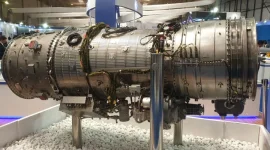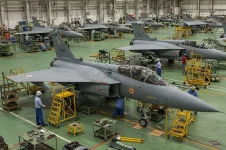- Views: 2K
- Replies: 19
A series of recent combat failures involving Chinese-manufactured military hardware is casting serious doubt on China's ambitions to become a top-tier global arms supplier.
Weapons systems marketed as cost-effective alternatives to Western and Russian equipment have demonstrated significant performance issues in real-world conflicts, according to recent reports from Pakistan, Cambodia, and analysis of the recent conflict in Iran.
These incidents highlight a troubling pattern of unreliability that threatens to undermine the credibility of China's rapidly growing defence industry.
The Appeal and the Pitfall of Chinese Arms
According to the Stockholm International Peace Research Institute (SIPRI), China has become the world's fourth-largest arms exporter. Its market success is built on a straightforward strategy: offering advanced-looking military technology at a fraction of the cost of competitors.Systems like the J-10C fighter jet, Wing Loong-II drones, and the HQ-series of air defence missiles appeal to nations with limited defence budgets.
Furthermore, Beijing's willingness to supply arms to countries facing Western sanctions, such as Pakistan and Iran, has secured it a significant market share, with Pakistan alone accounting for over 60% of its exports.
However, evidence from the battlefield suggests this affordability comes at a significant price in quality, reliability, and combat effectiveness. A growing body of evidence points towards recurring issues, including poor manufacturing standards and an inability to withstand the pressures of modern warfare.
Chinese systems have particularly struggled when facing adversaries equipped with sophisticated electronic warfare, stealth technology, and precision-strike capabilities.
Case Study: Small Arms Failure in Cambodia
The reliability issues were recently highlighted in Cambodia.A video that circulated online in May 2025 showed a Cambodian soldier's Chinese-made light machine gun (LMG) repeatedly jamming during a border skirmish with Thailand.
The incident, occurring amid heightened tensions that led Cambodian Prime Minister Hun Manet to activate a conscription law, brought global attention to the inconsistent performance of Chinese small arms under combat stress.
Such failures not only endanger the lives of soldiers but also severely damage user confidence in the equipment.
This is not an isolated event, as similar complaints about defective components in Chinese weapons have been reported previously by military forces in Nigeria and Myanmar.
Case Study: Pakistani Air Defence Network Overwhelmed
Pakistan, China’s largest military hardware client, has heavily integrated Chinese technology into its armed forces.In May 2025, this reliance was put to the test during India’s "Operation Sindoor," launched in response to a terrorist attack in Jammu and Kashmir. The operation resulted in a catastrophic failure of its Chinese-supplied air defence network.
Indian Air Force (IAF) Rafale jets, using SCALP precision-strike missiles, successfully bypassed and neutralized Pakistan's air defence grid. Reports indicate that Chinese-made systems, including the HQ-9 and HQ-16 surface-to-air missiles (SAMs) and YLC-8E anti-stealth radars, were rendered ineffective by Indian electronic warfare tactics.
The systems failed to intercept any incoming missiles, and a key YLC-8E radar at Chunian Air Base was reportedly destroyed.
In addition, several Chinese-made Wing Loong-II drones operated by Pakistan were shot down by Indian air defences, further exposing their vulnerabilities.
An article in The Times of India noted the operation exposed "critical vulnerabilities" in Pakistan's arsenal, dealing a severe blow to China's reputation.
Speculation Over Iran Proves Hollow
In June 2025, Israeli airstrikes successfully crippled approximately one-third of Iran’s air defence network, which primarily consists of Russian and locally-developed systems.In the aftermath, some Chinese military commentators on social media platforms like Weibo claimed that Chinese weapons, such as the J-10C fighter and Hongqi-series SAMs, would have performed better.
However, these assertions are undermined by the documented performance of similar Chinese systems in Pakistan. The inability of China's premier air defence technology to counter Indian electronic warfare and precision missiles suggests they would be equally, if not more, vulnerable to Israel's highly advanced air force.
Global Repercussions for 'Made in China' Arms
The cumulative impact of these battlefield failures represents a significant blow to the credibility of China's defence industry.While China's arms exports are substantial, their concentration in a few key clients, particularly Pakistan, makes its market position vulnerable. The repeated underperformance of its systems risks alienating potential buyers who prioritise reliability over cost.
This situation creates a strategic opening for competitors.
Western and Israeli manufacturers may find new customers as nations re-evaluate the true cost and risk of relying on Chinese military technology, meanwhile nations like India are increasingly promoting their own combat-proven systems like the BrahMos missile and Akash air defence system as more affordable options with proven reliability.



